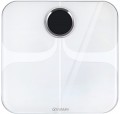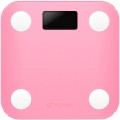Minimum measurement weight
The minimum weight limit at which the scale's readings must align with the specified margin of error is referred to as the minimum load parameter. While theoretically the scale can display measurements below this threshold, the reliability of results can't be guaranteed due to the extremely low load on the sensors in the device's design. The minimum load requirement is primarily determined by the type and intended use of the scales. For instance, kitchen models typically have a range of a few grams, floor scales start at a couple of kilograms, and commodity warehouse scales might begin at 10-15 kg.
Units of measurement
Weights are able to keep records in various units of measurement, while accounting can be done both by mass and by volume. Among the most common units of measurement, we highlight the following.
— Grams (g) — a unit of weight that belongs to the metric system. Grams are used in desktop kitchen scales.
— Kilograms (kg) — a unit of weight that belongs to the metric system. Kilograms are used in floor weighing equipment.
— Pounds (lb:oz) is a common unit of weight used in some countries in Europe, as well as in the United States. 1 pound can be equated to 0.45 kilograms.
— Milliliters (ml) — a unit of volume that belongs to the metric system. Some models of scales are able to determine the volume of milk and water based on mass.
— Ounces (fl'oz) is a unit of volume used in English-speaking countries. 1 US ounce is equivalent to 30 mL.
— Stones (st) is the British unit of weight. Stones are used to take into account the mass of the human body, so this measurement system is found in floor household and specialized diagnostic scales. 1 stone can be equated to 6.35 kilograms.
Guest mode
The presence
of a guest mode in scales with memory for several users (see above). This function, in accordance with the name, is intended for cases when the balance is used by a "guest" — a person who does not need to be entered into the permanent memory of the device (and who should not have access to it). The results of "guest" measurements are displayed once, are not stored in memory and do not affect its contents. This mode can be useful not only directly for guests, but also in other situations — for example, to demonstrate or check the capabilities of scales in a store before buying

